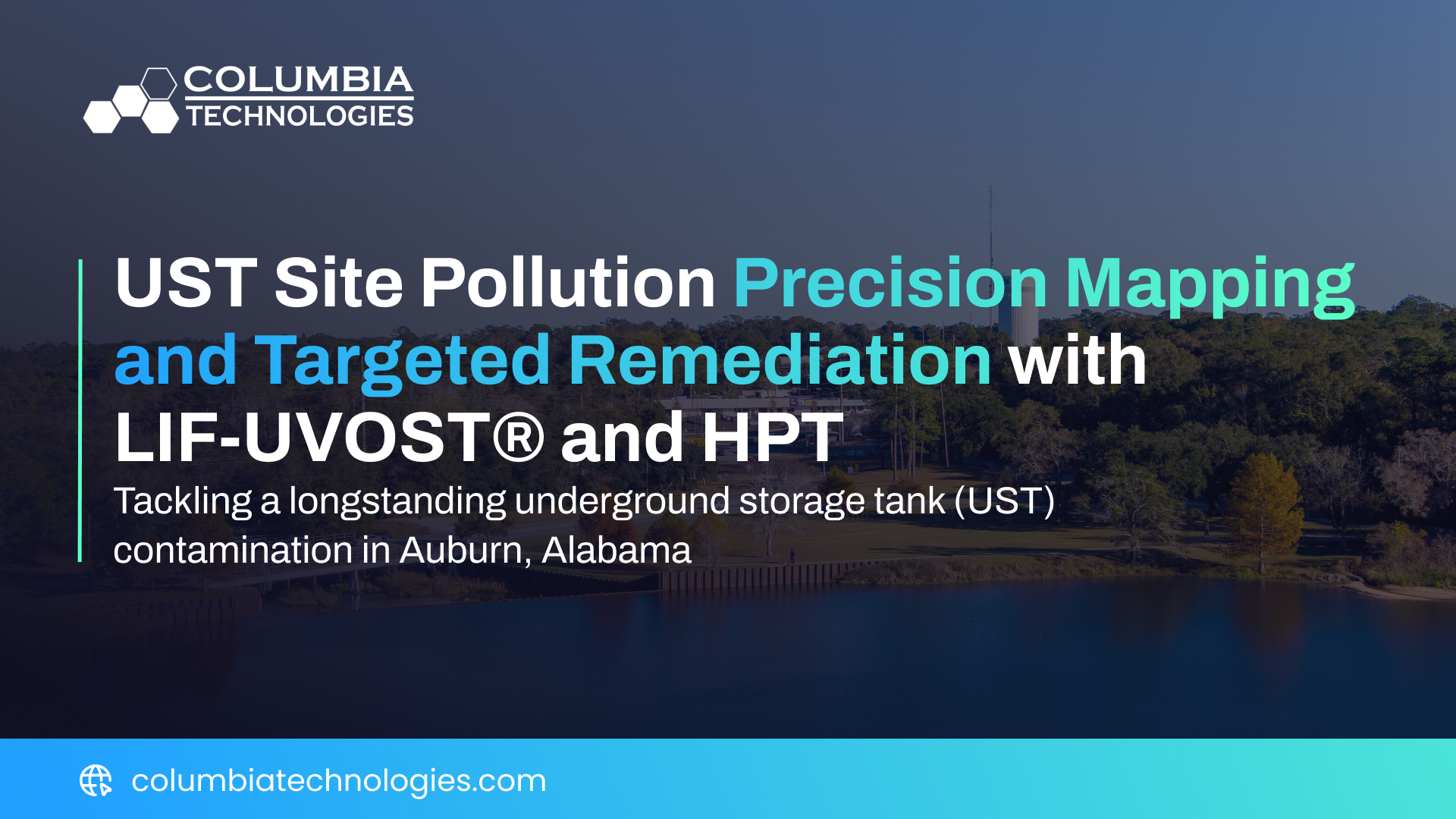Solving Persistent UST Site Pollution Through Precision Mapping and Targeted Remediation: A COLUMBIA Technologies Case Study
Background Story
In Auburn, Alabama, a former construction company headquarters faced a daunting challenge. Despite the removal of two leaking 1,000-gallon gasoline tanks in the early '90s and over $340,000 spent on assessments, monitoring, and cleanup over 15 years, the site remained contaminated. The site's journey through various remediation efforts, including natural attenuation and enhanced multi-phase extraction, had been long and costly, with limited success. This case study illustrates a common scenario in the environmental remediation field
Why This Case Study Is Important
Environmental consultants, state agencies, and Department of Defense sites often confront complex underground storage tank (UST) pollution scenarios that resist conventional cleanup approaches. This case study is pivotal as it demonstrates a breakthrough in environmental assessment and remediation strategy that can serve as a blueprint for similar challenging sites.
It underscores the critical need for precise contamination mapping and the selection of effective remediation techniques tailored to the specific conditions of each site.
The Challenge
The site in Auburn presented a multifaceted challenge. Previous efforts had revealed benzene, toluene, ethylbenzene, and xylenes (BTEX) concentrations below target levels, yet LNAPL free product unexpectedly appeared in monitoring wells, indicating a more significant and deeper contamination than initially believed.
Over the years, contractors had installed numerous wells, performed over 40 multi-phase extraction events, and recovered substantial volumes of LNAPL and petroleum contact water, yet the contamination persisted, highlighting the need for a more accurate conceptual site model (LCSM).
The Solution
COLUMBIA Technologies stepped in with a pioneering approach, deploying a combination of LIF-UVOST® and HPT tools. The LIF-UVOST® system, utilizing a laser to excite polycyclic aromatic hydrocarbons, allowed for precise mapping of the contamination, revealing its extent, depth, and complexity far beyond previous assessments. The HPT system measured continuous data on permeability by injecting water into the formation, identifying contaminant migration pathways and optimal zones for remedial material injection.
The integration of these technologies provided a comprehensive and detailed understanding of the subsurface conditions, enabling the formulation of a targeted Corrective Action Plan. The plan proposed the injection of chemical oxidants, surfactants, or bioremediation products to address the residual free product, guided by the precision mapping of subsurface contamination.
Download the full case study here
Conclusion
The COLUMBIA Technologies case study in Auburn, Alabama, represents a significant advancement in addressing persistent UST site pollution. By combining LIF-UVOST® and HPT technologies, the team was able to unravel the complexities of the site's contamination, leading to a targeted and effective remediation strategy. This case not only highlights the importance of precise subsurface mapping in understanding and resolving environmental challenges but also sets a precedent for utilizing innovative technologies in the remediation of contaminated sites. As we move forward, such approaches will be crucial in tackling similar environmental challenges, ensuring more sites can be successfully remediated and returned to safe use.


